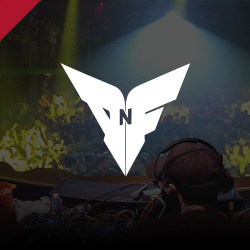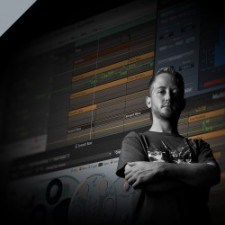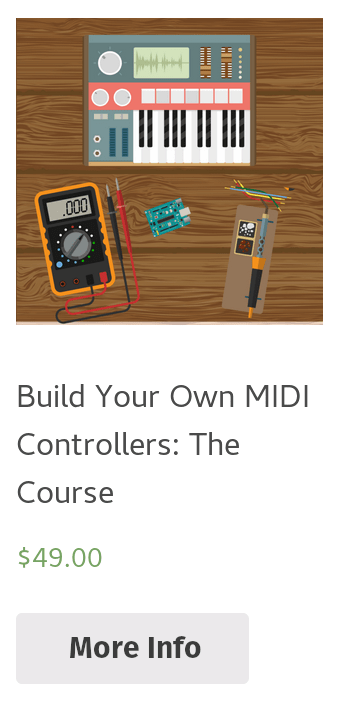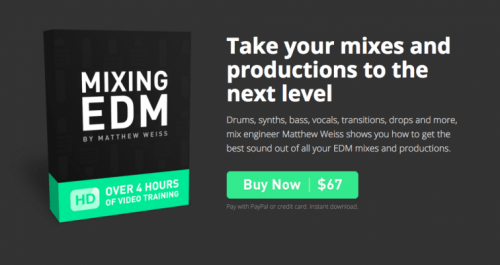How To Make Dubstep: The Ultimate Guide
The debate as to what dubstep really “is” and when it began could go on for eternity.
Still, producers and fans alike have found some common ground and usually regard dubstep as an electronic dance genre characterized by head banging beats, ear shaking bass, dark atmosphere and mind blowing drops.
Dubstep does have a unique tone to itself and any avid listener can easily distinct between dubstep and other close sound genres.
Dubstep shot to popularity rapidly from 2010-2011. Altough it is not as huge as it was during that time period, it still maintained a solid fan base and an endless amount of world-class artists.
This article will teach you how you can get started with dubstep and create your first track.
The article is written in such a fashion that it doesn’t matter which DAW you use. At the end of it you’ll have a pool of applicable knowledge about dubstep and music production in general. Lastly, if you don’t own a DAW, we’ll even help you choose one.
Enjoy!
Table of Contents:
- Recommended Courses
- Which Software Should You Use?
- What BPM is Dubstep
- How to Create your Drum Track
- Creating a Melody
- Creating a Breakdown/Build-up
- Creating the DROP
Recommended Courses:
Before we get into the basics, I wanted to give you my top recommendations on courses if you decide to take your music production skills to the next level and invest in yourcraft.

Dubstep Production Techniques
This course is a must-have! For any aspiring dubstep producer, you’ll learn from 2 pioneers in the genre of Dubstep who knows just what it takes to produce a great track.
Mixing EDM
If you plan on producing more genres than just Dubstep, this course is made for you. This teaches you how to mix all of the elements of your songs to sound great together. Overall, this is an excellent course for anyone who takes music production seriously.

Dubstep Production in Logic Pro
Any Logic Pro user will fall in love with this course. Packed with tons of tutorials, you’ll learn how to fully-utilize Logic’s powerful features for Dubstep creation.
Which software should you use?
Choosing your Digital Audio Workstation or DAW can be a serious decision, especially if that’s your first one.
With the explosion of dubstep and other electronic genres, there are simply so many options to choose from, all having their very own strengths & weaknesses.
So it would be a much more sensible decision to actually know the factors about a DAW that make it more reliable and efficient.
This article will teach you everything you need to know about a DAW and what you should be aware of before making the purchase.
What BPM does Dubstep have?
Dubstep, while there are many different variations, rhythms are traditionally accented and shuffled containing a lot of triplets.
The tempo of a dubstep track is usually within the range 140 – 145 beats per minute. 140 is the most popular option and what I recommend you start out on.
How to Create your Drum Track
Making drum beats that keep the audience phased up with the rhythm of your track is an extremely important part of producing dubstep.
Plus, learning about drum beats is pretty much the first lesson in any dubstep course, so you can’t skip this one for any reason.
Fortunately for you, I have found a great video that details step by step methods to produce your very own drum track. You can study-up on that article here.
Creating a Melody
Generally speaking, all music is essentially based on two factors, scales & rhythm. Scales are that part of your music that is made up with melodies, chords, basslines and harmonies.
While rhythm is what forms the beat of any song. You should have complete command over musical scales and they should be on your finger-tips at all times. You can either get an app on your smartphone to keep track of different scales or you can use the scale finder that we’ll be going over briefly.
Scales are the building blocks of any song, be it dubstep or any other.
Scales are simply a set of notes that sound good together. Quickly try to sit at a piano/keyboard (if you have one) and make up a melody. If you didn’t stick to a specific scale, your melody probably sounded pretty out of place.
Without them, your dubstep track will more than likely sound out of tune and the notes will sound randomly placed!
Learning about scales is an important part of the entire process and there are 2 main scales that you should be aware of at all times. First is the major scale while the second one is the minor scale.
The general rule you should remember about major scales & minor scales is that they sound “happy” and “dark”, respectively.
And as Dubstep is a “Dark” genre, you’ll be primarily focusing on the minor scale.
You won’t find too many dubstep tracks written in major.
https://www.youtube.com/watch?v=A_VfEWuG91c
Making a Melody (Video)
Here’s a website that will help you select the right scales for you. You don’t have to be a music theory aficionado to understand scales with this site.
If you’re not 100% clear, here’s a video showing you how to make your very own melodies.
Use the above mentioned Musical Scale Finder Tool with the knowledge you obtain from the video to get started with your own productions.
Creating a Break-down/Build-up
Knowing how to create a kick-ass build-up is an essential part of creating suspense and excitement in your tracks.
You can consider a breakdown as the complete opposite of a build-up. A breakdown is a low-energy part of a track that focuses on building the vibe. That way, when the build-up approaches, it will surprise the listener achieve suspense.
There are a few simple tricks you can try for the perfect breakdown/buildup. Dubstep accomplishes this using a number of techniques such as taking out the drums, adding a rising sound, or even creating a time-dividing drum roll.
However, never feel like you have to include a certain element in music. Don’t feel like there is a quota of elements you need in music. Go with what you feel will work the best.
The video above is extremely useful. It’ll teach you how to make Break-down/Build-ups within minutes.
Creating the DROP
The Drop is considered as the most vital part of any electronic genre track and its perfect execution can make-or-break a song from becoming a global hit or not..
A drop is basically a point in an electronic music track where a switch of bass line/rhythm occurs, after a break-down/build-up section.
Many EDM tracks have more than one drop in them and, no matter what electronic genre you choose to produce, each EDM track has a similar arrangement to make it convenient for DJs to mix.
When talking about dubstep in particular, the drop is characterized by a heavy full bass line and a “vowel” or a “wobble” bass, followed by a shuffling beat.
Like many other EDM genres, dubstep tracks may contain many drops. It is vital for a music producer to create an epic drop as they create overbearing drama and release an enormous amount of energy accumulated by the crowd during the track’s progression.
There are different styles of drop within any dubstep track. We’ll be going over two of the most popular styles of drops.
Making a Heavy Drop
A heavy drop is usually described as dirty, nasty and hardcore. The idea will be best expressed by a video, so here’s one showing you how to make a Heavy Drop within just a few minutes. It will take practice and creativity, or course.
https://www.youtube.com/watch?v=QTxCSdiOMWM
Making a Melodic Drop
These drops have just as much energy, but don’t disrupt the tracks harmony & melodic elements. Here’s a video with a basic tutorial on how to make one of these.
I hope you have enjoyed learning how to make Dubstep!
The topic of making your own dubstep is very wide. Let me know if you have any helpful dubstep production tips in the comment section below.
Feel free to ask any questions below. For more awesome tips, make sure to browse our other helpful articles. Thanks for reading!


Leave a Comment